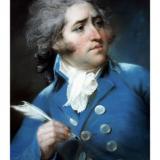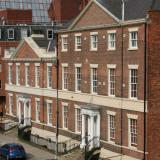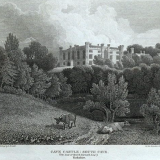Georgian Science, Industry & Commerce in East Yorkshire
The Industrial Revolution brought new technologies and increases in commerce. East Yorkshire was well placed to take advantage of these improvements to productivity and wealth. Whaling became the major industry in Hull after the various wars of the period made importation of oil difficult and costly. Agriculture continued to be the main business of the rest of the county.
One of the great commercial features of the Georgian period is the expansion of the canal network. Canals were built to link Driffield to the River Hull and Market Weighton to the Humber, while Beverley Beck was improved with a lock. Drainage schemes also made much more land commercially viable. All this helped to ship the region's goods to other parts of the country, and through Hull to the Baltic and the countries bordering the North Sea.
The region was the birthplace of a number of scientific notaries. Marmaduke Tunstall was born at Burton Constable and became a fellow of the Society of Antiquaries of London at the age of twenty-one. Later in the period, Bishop Burton born entomologist William Spence and Reighton born naturalist Hugh Edwin Strickland made their marks in their respective fields.
Dealing with Contagious Fever in Georgian Hull
In 1803 Miss Jane Horner sent an account of a contagious fever at Kingston-upon-Hull to the “Society for Bettering the Condition and Increasing the Comforts of the Poor”. Jane Horner, (1757-1828), lived with her bachelor brothers Simon and John Horner, wealthy merchants, at 28 High Street, Hull. [Site now in Mandela Gardens, next door to Oriel Chambers] They were ... (read more...)
Edward Topham and the Wold Cottage Meteorite
In the eighteenth century the notion that rocks could fall from the sky was dismissed by most educated people as ridiculous superstition. The only objects known to inhabit the Solar System other than the planets and their moons were comets, whose physical characteristics were poorly understood but which were thought to largely made of “vaporous” materials. Ceres, the largest ... (read more...)
Hull Merchants and the Philosopher Immanuel Kant
Early in the first ‘lockdown’ the society received an enquiry from Simon Wain-Hobson, a leading virologist working at the Pasteur Institute in Paris. He is a collector of, and writer on, Georgian drinking glasses, and he had recently purchased a glass engraved with the arms of the Burton family of Hotham Hall. Simon was seeking information on the Burtons. ... (read more...)
Winters in Georgian East Yorkshire
The Revd Nicholas Nichols, rector of Patrington, recorded in the parish register, as follows, what has been considered the most severe winter of the 18th century. ‘On Friday, December 28th, 1739, a violent storm blew from the east, which lasted for more than two days. At the same time began a very hard frost, and on Tuesday January the ... (read more...)
Canals: The Georgian Arteries of Trade
Before the Industral Revolution, inland towns that lacked access to a navigable river had to have their wares and wants transported over land. This mean trains of packhorses, trudging along roads which were often little more than mud tracks, barely passable in poor weather. The turnpike system, where the tolls of those using the roads would pay for their ... (read more...)
The Birth of Hull's Great Docks
For most of the eighteenth century, ships coming into Hull would dock at wharves at the river. The "Staithes" of High Street extend down to this area, which is now a pleasant walk away from the noise of the city. But in the mid eighteenth century the area was crowded and bustling, and merchants would soon be demanding more ... (read more...)







